POWGEN—Sample Environment
FERNS
FERNS stands for Fast Exchange Refrigerator for Neutron Scattering. This is the first generation sample changer that was developed for POWGEN as part of a Small Business Innovation Research project. The changer has a carousal that holds a maximum of 24 sample-filled vanadium cans and collects data in a temperature range of 12 to 320 K.
The cool down temperature from room temperature to 12 K is 45 minutes. However, samples can be changed at 12 K, which takes about 20 minutes. |
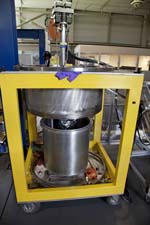 |
| FERNS |

Computer and camera used for observing sample changes. |
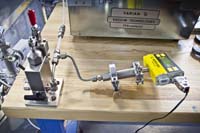
Helium fill station for FERNS cans. |
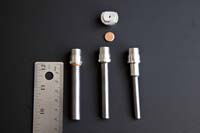
Sample can dimensions. Diameter of vanadium cans are 6, 8, and 10 mm respectively. Copper disk gaskets are used for sealing.
|
ILL Furnace
|
|
The traditional ILL furnace built with vanadium heating elements is available for high-temperature measurements from room temperature to 1200°C. Cooling to 200°C takes 3-4 hours from highest temperature, and the remainder can be sped up in less than 30 minutes using exchange gas. The vacuum level of the furnace is ~2 x 10-5 torr. The aluminum tail of the furnace has been modified to have vanadium window for the primary beam.
|
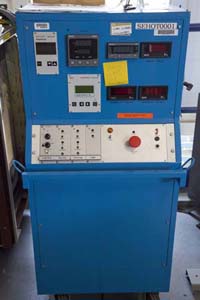
ILL controller. |
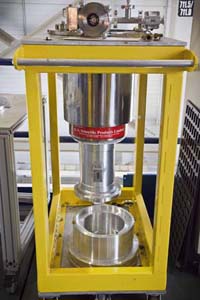 ILL furnace. |

Vanadium sample cans. |
Orange Cryostat
This is a standard 50 mm bore orange cryostat with modified tails similar to the ILL furnace to eliminate aluminum in the path of the primary neutron beam. Temperature range is 2 to 300 K.
Gas Handling System
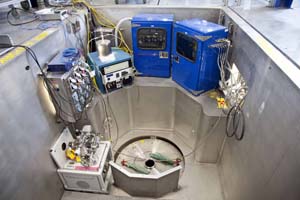
Two gas cabinets houses the mass flow controller to control flow of gas mixtures for hazardous and nonhazardous gases. Also shown in the picture are the pO2 sensor and residual gas analyzer (RGA) used in conjuction with the Lucyfe furnace for analyzing the input and output gas to and from samples.
A gas handling system is a permanently installed component of the beam line. Gas bottles are stored outside and plumbed to two cabinets at the instrument pit, one for nonhazardous gases and the other for flammable and hazardous gases. These cabinets are equipped with mass flow controllers to accurately control the gas flow into the sample. The current selection of gases includes N2, O2, CO2, He, Ar, H2, 4% H2, CH4, and CO. Use of any other gas requires additional safety approval. A residual gas analyzer (RGA), gas atmosphere furnace, and a pO2 sensor are also available as part of this integrated system.
Gas Atmosphere Furnace
This is the modified IPNS Lucyfe furnace with quartz insert. The sample is loaded in a quartz basket with frit at the bottom and an open top for easy flow of gas through the sample. The furnace is capable of heating up to 850°C.
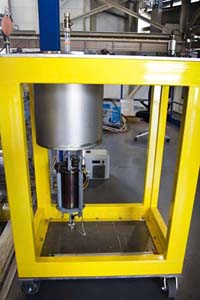
Gas atmosphere furnace showing quartz insert. The heating elements are made of vanadium. A second quartz tube is used to insert the sample, which is loaded in quartz baskets fitted with frit at the bottom (image at right), and hangs from a hook at the end of the inside tube.
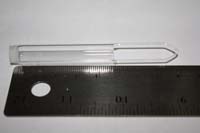
The quartz baskets are 6, 8 or 10 mm in diameter.











